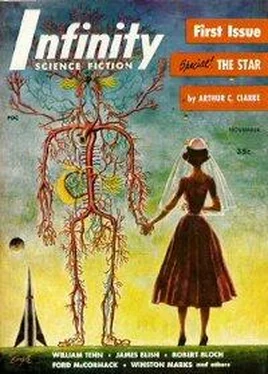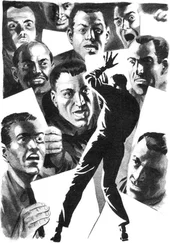Arthur Clarke - The Star
Здесь есть возможность читать онлайн «Arthur Clarke - The Star» весь текст электронной книги совершенно бесплатно (целиком полную версию без сокращений). В некоторых случаях можно слушать аудио, скачать через торрент в формате fb2 и присутствует краткое содержание. Год выпуска: 1955, Издательство: Royal Publications, Inc., Жанр: Фантастика и фэнтези, на английском языке. Описание произведения, (предисловие) а так же отзывы посетителей доступны на портале библиотеки ЛибКат.
- Название:The Star
- Автор:
- Издательство:Royal Publications, Inc.
- Жанр:
- Год:1955
- ISBN:нет данных
- Рейтинг книги:4 / 5. Голосов: 1
-
Избранное:Добавить в избранное
- Отзывы:
-
Ваша оценка:
- 80
- 1
- 2
- 3
- 4
- 5
The Star: краткое содержание, описание и аннотация
Предлагаем к чтению аннотацию, описание, краткое содержание или предисловие (зависит от того, что написал сам автор книги «The Star»). Если вы не нашли необходимую информацию о книге — напишите в комментариях, мы постараемся отыскать её.
The Star — читать онлайн бесплатно полную книгу (весь текст) целиком
Ниже представлен текст книги, разбитый по страницам. Система сохранения места последней прочитанной страницы, позволяет с удобством читать онлайн бесплатно книгу «The Star», без необходимости каждый раз заново искать на чём Вы остановились. Поставьте закладку, и сможете в любой момент перейти на страницу, на которой закончили чтение.
Интервал:
Закладка:
The Star
by Arthur C. Clarke
It is three thousand light-years to the Vatican. Once I believed that space could have no power over faith. Just as I believed that the heavens declared the glory of God’s handiwork. Now I have seen that handiwork, and my faith is sorely troubled.
I stare at the crucifix that hangs on the cabin wall above the Mark VI computer, and for the first time in my life I wonder if it is no more than an empty symbol. I have told no one yet, but the truth cannot be concealed. The data are there for anyone to read, recorded on the countless miles of magnetic tape and the thousands of photographs we are carrying back to Earth. Other scientists can interpret them as easily as I can—more easily, in all probability. I am not one who would condone that tampering with the truth which often gave my order a bad name in the olden days.
The crew is already sufficiently depressed, I wonder how they will take this ultimate irony. Few of them have any religious faith, yet they will not relish using this final weapon in their campaign against me—that private, good-natured but fundamentally serious war which lasted all the way from Earth. It amused them to have a Jesuit as chief astrophysicist. Dr. Chandler, for instance, could never get over it (why are medical men such notorious atheists?). Sometimes he would meet me on the observation deck, where the lights are always low, so that the stars shine with undiminished glory. He would come up to me in the gloom and stand staring out of the great oval port, while the heavens crawled slowly round us as the ship turned end over end with the residual spin we had never bothered to correct.
“Well, Father,” he would say at last. “It goes on forever and forever, and perhaps Something made it. But how you can believe that Something has a special interest in us and our miserable little world—that just beats me.” Then the argument would start, while the stars and nebulae would swing around us in silent, endless arcs beyond the flawlessly clear plastic of the observation port. It was, I think, the apparent incongruity of my position which, yes, amused the crew. In vain I would point to my three papers in the Astrophysical Journal, my five in the Monthly Notices of the Royal Astronomical Society. I would remind them that our order has long been famous for its scientific works. We may be few now, but ever since the eighteenth century we have made contributions to astronomy and geophysics out of all proportion to our numbers.
Will my report on the Phoenix Nebula end our thousand years of history? It will end, I fear, much more than that. I do not know who gave the nebula its name, which seems to me a very bad one. If it contains a prophecy, it is one which cannot be verified for several thousand million years. Even the word “nebula” is misleading; this is a far smaller object than those stupendous clouds of mist—the stuff of unborn stars—which are scattered throughout the length of the Milky Way. On the cosmic scale, indeed, the Phoenix Nebula is a tiny thing—a tenuous shell of gas surrounding a single star. Or what is left of a star…
The Rubens engraving of Loyola seems to mock me as it hangs there above the spectrophotometer tracings. What would you, Father, have made of this knowledge that has come into my keeping, so far from the little world that was all the universe you knew? Would your faith have risen to the challenge, as mine has failed to do? You gaze into the distance, Father, but I have traveled a distance beyond any that you could have imagined when you founded our order a thousand years ago. No other survey ship has been so far from Earth: we are at the very frontiers of the explored universe. We set out to reach the Phoenix Nebula, we succeeded, and we are homeward bound with our burden of knowledge. I wish I could lift that burden from my shoulders, but I call to you in vain across the centuries and the light-years that lie between us. On the book you are holding the words are plain to read. “AD MAIOREM DEI GLORIAM,” the message runs, but it is a message I can no longer believe. Would you still believe it if you could see what we have found?
We knew, of course, what the Phoenix Nebula was. Every year, in our galaxy alone, more than a hundred stars explode, blazing for a few hours or days with thousands of times their normal brilliance before they sink back into death and obscurity. Such are the ordinary novae—the commonplace disasters of the universe. I have recorded the spectrograms and light curves of dozens, since I started working at the lunar observatory. But three or four times in every thousand years occurs something beside which even a nova pales into total insignificance.
When a star becomes a supernova, it may for a little while outshine all the massed suns of the galaxy. The Chinese astronomers watched this happen in A.D. 1054, not knowing what it was they saw. Five centuries later, in 1572, a supernova blazed in Cassiopeia so brilliantly that it was visible in the daylight sky. There have been three more in the thousand years that have passed since then. Our mission was to visit the remnants of such a catastrophe, to reconstruct the events that led up to it, and, if possible, to learn its cause. We came slowly in through the concentric shells of gas that had been blasted out six thousand years before, yet were expanding still. They were immensely hot, radiating still with a fierce violet light, but far too tenuous to do us any damage. When the star had exploded, its outer layers had been driven upward with such speed that they had escaped completely from its gravitational field. Now they formed a hollow shell large enough to engulf a thousand solar systems, and at its center burned the tiny, fantastic object which the star had now become—a white dwarf, smaller than the Earth, yet weighing a million times as much. The glowing gas shells were all around us, banishing the normal night of interstellar space. We were flying into the center of a cosmic bomb that had detonated millennia ago and whose incandescent fragments were still hurtling apart. The immense scale of the explosion, and the fact that the debris already covered a volume of space many billions of miles across, robbed the scene of any visible movement. It would take decades before the unaided eye could detect any motion in these tortured wisps and eddies of gas, yet the sense of turbulent expansion was overwhelming. We had checked our primary drive hours before and were drifting slowly toward the fierce little star ahead. Once it had been a sun like our own, but it had squandered in a few hours the energy that should have kept it shining for a million years. Now it was a shrunken miser, hoarding its resources as if trying to make amends for its prodigal youth.
No one seriously expected to find planets. If there had been any before the explosion, they would have been boiled into puffs of vapor and their substance lost in the greater wreckage of the star itself. But we made the automatic search, as always when approaching an unknown sun, and presently we found a single small world circling the star at an immense distance. It must have been the Pluto of this vanished solar system, orbiting on the frontiers of the night. Too far from the central sun ever to have known life, its remoteness had saved it from the fate of all its lost companions.
The passing fires had seared its rocks and burned away the mantle of frozen gas that must have covered it in the days before the disaster. We landed, and we found the Vault.
Its builders had made sure that we should. The monolithic marker that stood above the entrance was now a fused stump, but even the first long-range photographs told us that here was the work of intelligence. A little later we detected the continent-wide pattern of radioactivity that had been buried in the rock. Even if the pylon above the Vault had been destroyed, this would have remained, an immovable and all but eternal beacon calling to the stars. Our ship fell toward this gigantic bull’s-eye like an arrow into its target.
Читать дальшеИнтервал:
Закладка:
Похожие книги на «The Star»
Представляем Вашему вниманию похожие книги на «The Star» списком для выбора. Мы отобрали схожую по названию и смыслу литературу в надежде предоставить читателям больше вариантов отыскать новые, интересные, ещё непрочитанные произведения.
Обсуждение, отзывы о книге «The Star» и просто собственные мнения читателей. Оставьте ваши комментарии, напишите, что Вы думаете о произведении, его смысле или главных героях. Укажите что конкретно понравилось, а что нет, и почему Вы так считаете.











